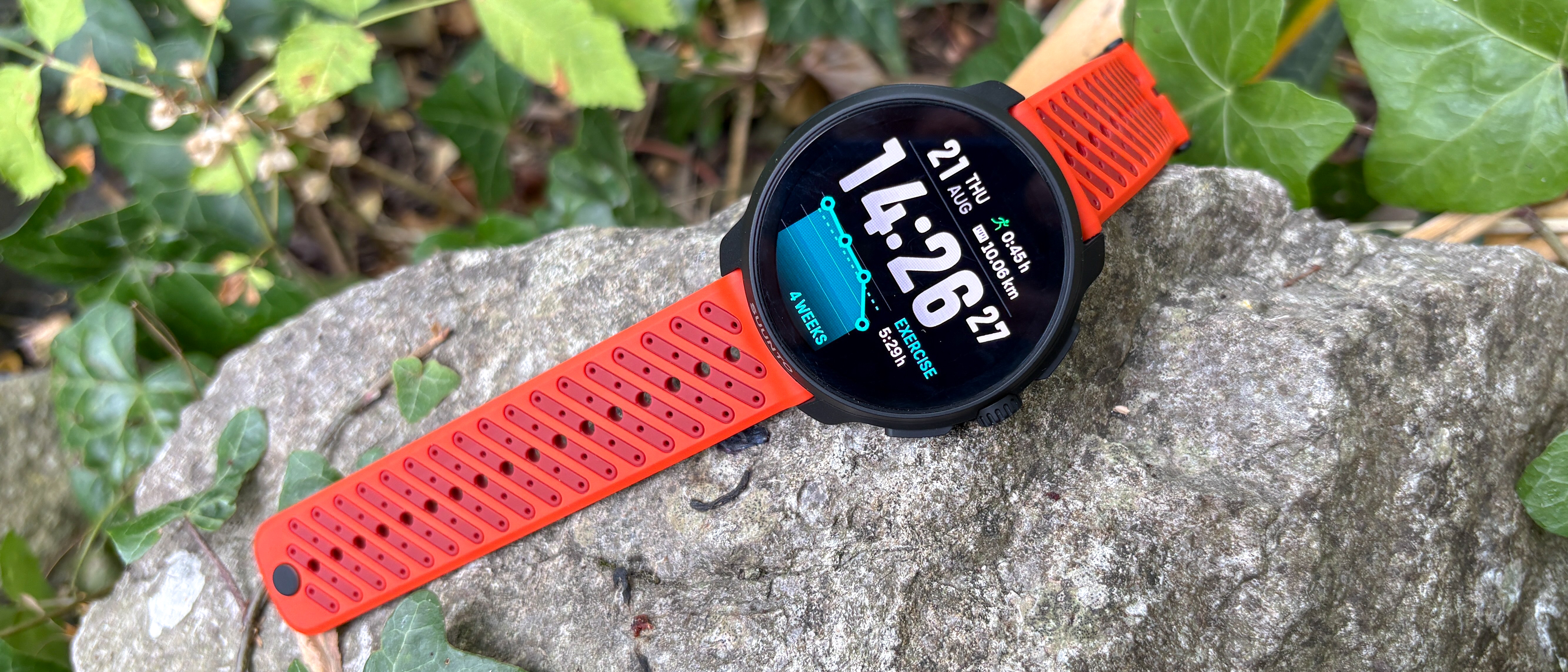Tom's Guide Verdict
The Suunto Race 2 improves in key areas to make it a worthy competitor to the Garmin Forerunner 970, though its price rise might mean the original Suunto Race is a better value alternative. The new display is great and the battery life is excellent, but I'd hoped to see a clearer improvement in heart rate accuracy.
Pros
- +
Big, bright AMOLED display
- +
Offline maps
- +
Faster processor
- +
Cheaper than Garmin Forerunner 970
- +
Long battery life
Cons
- -
Price rise on Suunto Race
- -
Limited smart features
- -
Heart rate tracking not perfect
- -
Low step counts
Why you can trust Tom's Guide
Suunto got a lot of things right with the original Suunto Race sports watch, which offered a durable and attractive design, accurate GPS tracking and offline maps at a good price that undercut its rivals.
The Suunto Race 2 improves on its predecessor with a few key upgrades, including a bigger, brighter AMOLED display, a thinner case and a faster processor.
For those upgrades you do pay an extra $100 for the Suunto Race 2 compared with the original Race, but it’s still considerably cheaper than the Garmin Forerunner 970, its main rival and the best sports watch available, in my opinion.
I’ve been wearing the Suunto Race 2 for two weeks and for the most part it has impressed with its appealing design, long battery life, and detailed sports tracking. It’s an excellent option for runners and triathletes, but does still fall short in some areas compared to the best Garmin watches in particular.
Suunto Race 2 review: cheat sheet

- More expensive: The Suunto Race 2 is $100 more than the original Suunto Race, costing $499 for the steel model and $599 for the titanium model. However, it’s still cheaper than key rivals including the Garmin Forerunner 970.
- A bigger, brighter display: The Suunto Race 2 is an AMOLED sports watch with a 1.5-inch, 2000-nit display, up from 1.43-inch on the Suunto Race.
- Thinner and lighter: The Suunto Race’s case is just 12.5mm thick, 6% thinner than the Suunto Race, and it weighs in at 76g for the steel model and 65g for the titanium watch, including its silicone strap.
- Faster than ever: Suunto sports watches have been criticized for lag in the past, but a new processor in the Suunto Race 2 aims to create a snappier user experience.
- Long battery life: Despite the large, bright display, the Suunto Race 2 offers up to 18 days of battery life and a mammoth 55 hours of GPS tracking in its most accurate mode (50 hours with the always-on display).
- Offline maps: You can download free maps to the Suunto Race 2 via the Suunto app to use offline, and follow routes with turn-by-turn directions.
- Key rivals: The Garmin Forerunner 970 is the main rival to the Suunto Race 2, also offering a bright AMOLED display, offline maps and impeccable tracking. The Polar Vantage V3 is also a rival, while the Coros Pace Pro offers a cheaper AMOLED alternative.
Suunto Race 2 review: price and availability
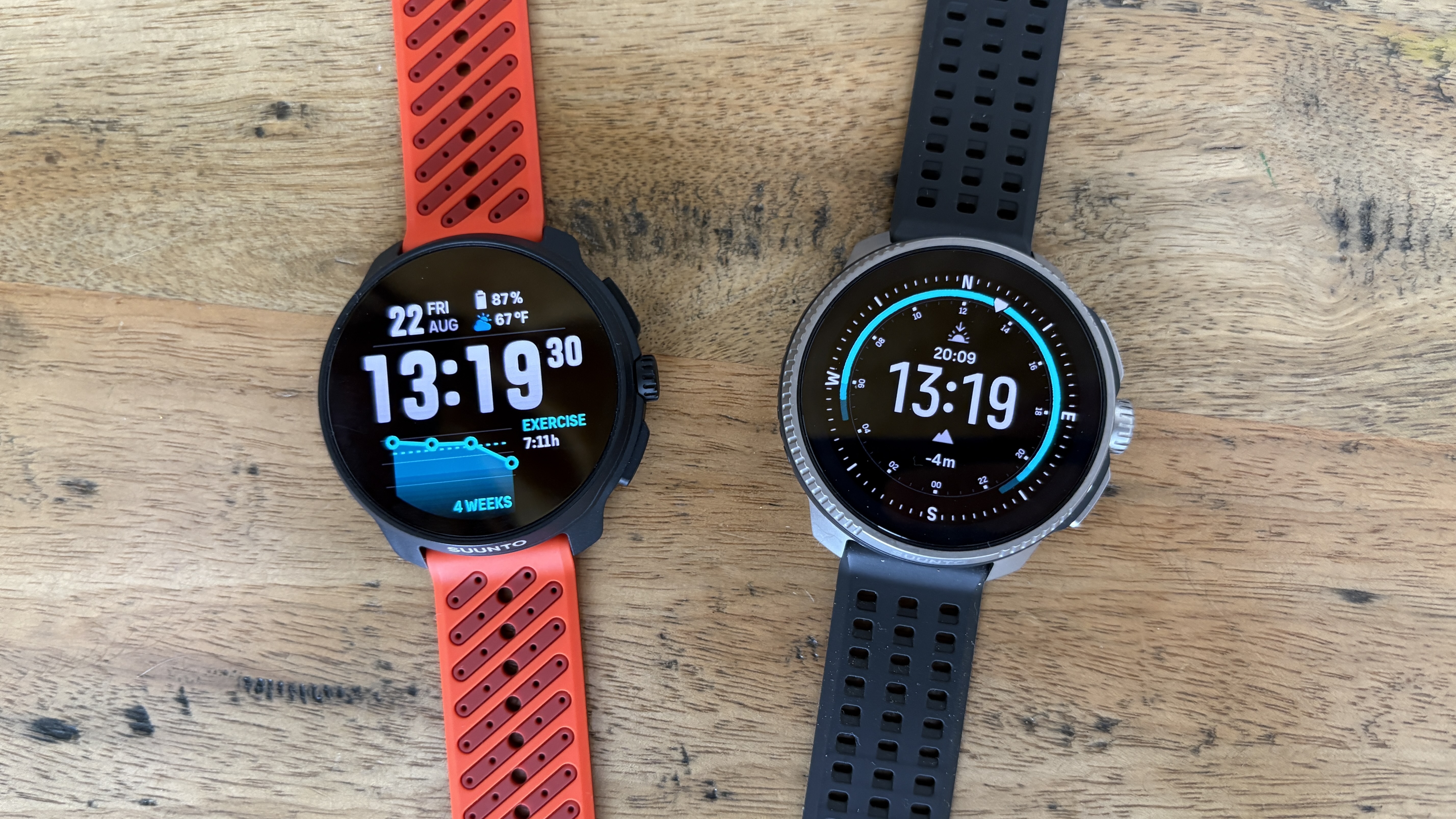
The Suunto Race 2 launched on August 27, 2025 and costs $499 / £429 for the steel version of the watch, and $599 / £529 for the titanium model. It’s a jump in price on the Suunto Race, which is now $399 / £345 for the steel model and $499 / £445 for titanium, but notably cheaper than its main rival the Garmin Forerunner 970, which is $749.99 / £629.99.
Suunto Race 2 review: specs compared
| Row 0 - Cell 0 | Suunto Race | Suunto Race 2 |
Price | $399 steel; $499 titanium | $499 steel; $599 titanium |
Case size | 49 x 13.3mm | 49 x 12.5mm |
Screen size | 1.43 inches | 1.5 inches |
Resolution | 466 x 466 pixels | 466 x 466 pixels |
Screen material | Sapphire Crystal | Sapphire Crystal |
Weight (with silicone strap) | 83g steel; 69g titanium | 76g steel; 65g titanium |
Dual-band GPS battery life | 50 hours | 50 hours |
Smartwatch battery life | Up to 18 days | Up to 16 days |
Touchscreen | Yes | Yes |
Speaker/Mic | No | No |
Water resistance | 100m | 100m |
Suunto Race 2 review: design and display
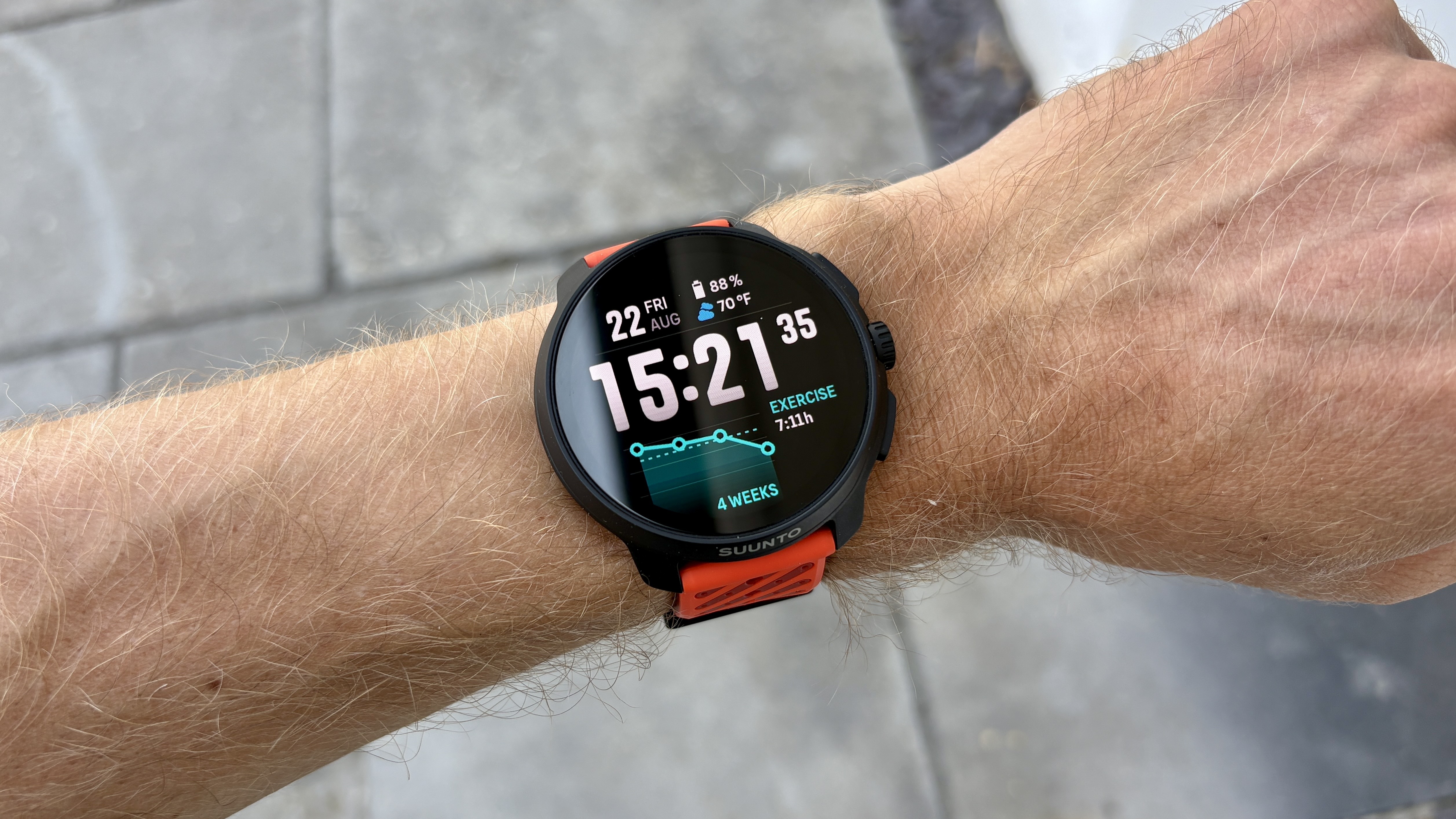
The Suunto Race 2 looks great and has a robust feel to it thanks to the metal bezel and steel buttons. The steel model I’m testing comes in black or white, while the titanium is only available in black, with a choice of silicone strap.
It sits comfortably on the wrist thanks to its thin case and doesn’t feel too large, despite the fact it has such a big AMOLED screen. The display is impressive and using the touchscreen to navigate the UI feels snappier than with past models thanks to the new processor.
Get instant access to breaking news, the hottest reviews, great deals and helpful tips.
There are three buttons on the watch, one of which is a digital dial. It takes a little getting used to the controls on the watch but it’s quick and easy to access your sports modes and widgets showing off your health and activity stats.
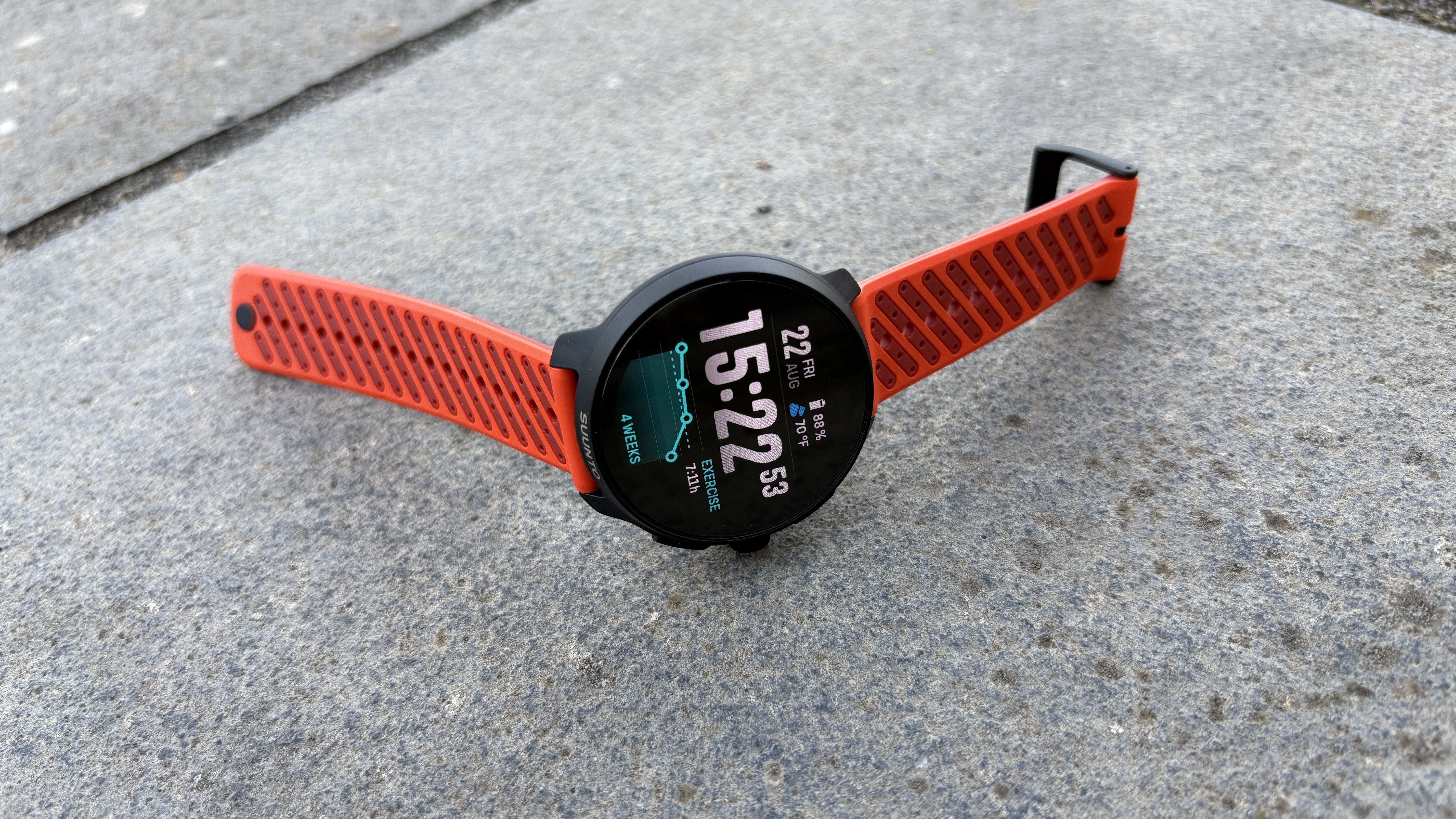
The Suunto Race 2 uses 22mm straps, and it’s simple to swap out the standard silicone one if you want to — I subbed in a nylon band as it makes the watch feel lighter and more comfortable.
All of the usual sensors are present and correct on the Suunto Race 2, which offers optical heart rate tracking and dual-band GPS, and has a barometric altimeter and pulse oximeter under the hood.
You can connect external sensors like cycling power meters via Bluetooth and the watch has 32GB of storage for maps, though it can’t store music unlike the cheaper Suunto Run.
Suunto Race 2 review: sports tracking and training analysis
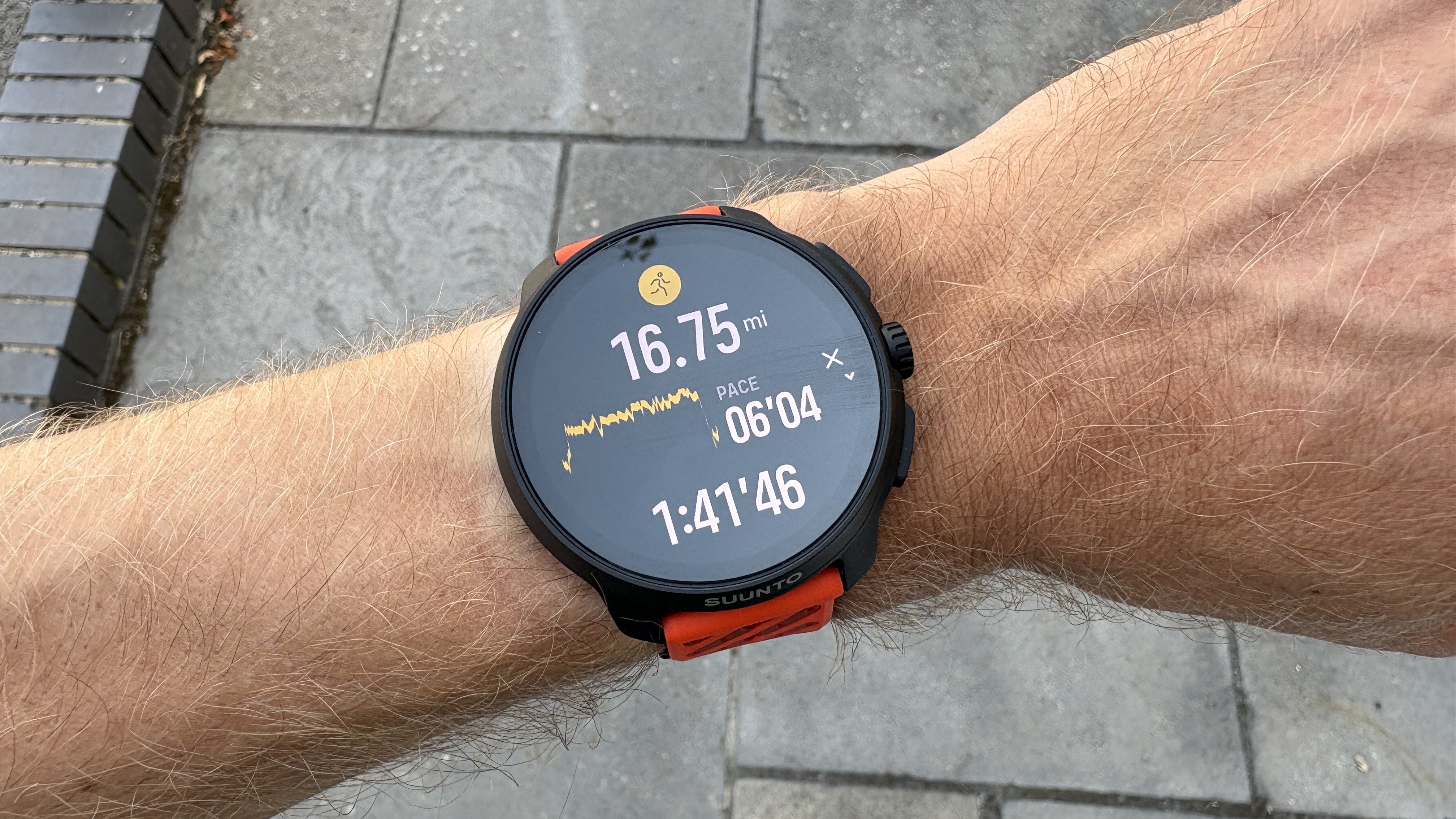
The Suunto Race 2 has preset sports modes for a wide variety of activities, including a track run mode, but you can’t customize these directly, so if you have certain stats you want to see you need to create your own sports mode. Even if you’ve done this on other Suunto watches in the past, you have to create them from scratch again for the Race 2.
This is one of a few mildly annoying idiosyncrasies to Suunto’s approach to tracking, which also includes using SuuntoPlus apps you install on the watch via the Suunto phone app to add stats that could simply be part of your data fields in my opinion.
I’ve tracked a variety of workouts with the Suunto Race 2 and never been short of the stats I want to see on my wrist during them. You can also create interval workouts in the app to follow on the watch, and load workouts and training plans from other sources like TrainingPeaks.
Your workout data feeds into the extensive training analysis on the watch, which is powered by TrainingPeaks and uses a lot of three-letter acronyms. It’s a little hard to parse at first, but once you get your head around it the analysis shows useful details on things like chronic training load you can use to ensure you’re working at the right intensity each day and week.
Suunto Race 2 review: GPS and heart rate accuracy
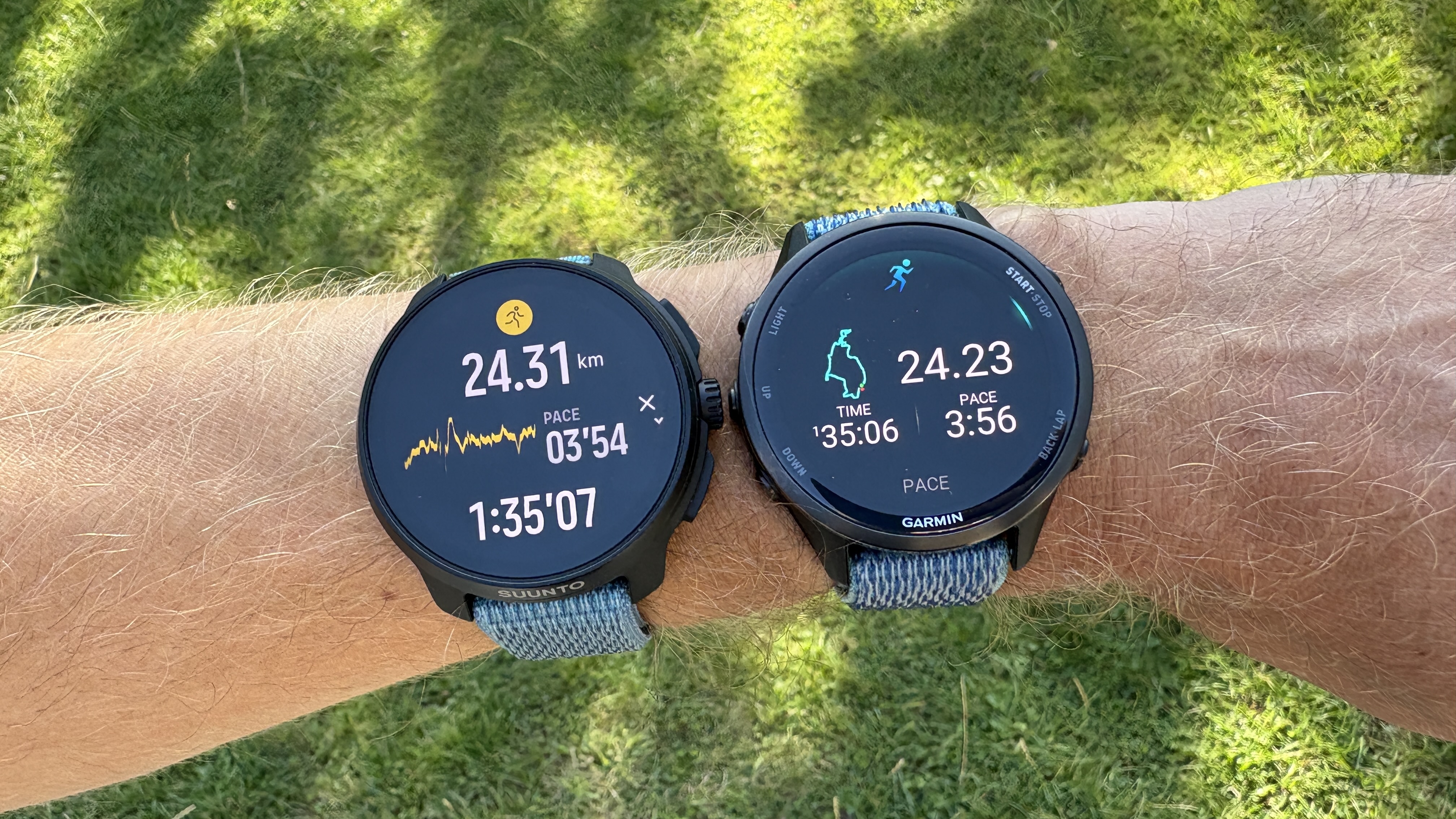
I’ve done around 160 miles of running with the Suunto Race 2, along with other workouts including bike rides, strength and yoga sessions. During that time I’ve compared its GPS accuracy to the Garmin Forerunner 970, also checking the GPS tracks after each run for errors, and compared its heart rate tracking to the Garmin HRM600 chest strap.
Suunto watches have offered excellent GPS accuracy in recent years, so I’ve been a little surprised to see a few more small errors on the tracks of the Suunto Race 2 than I did with the Suunto Race.
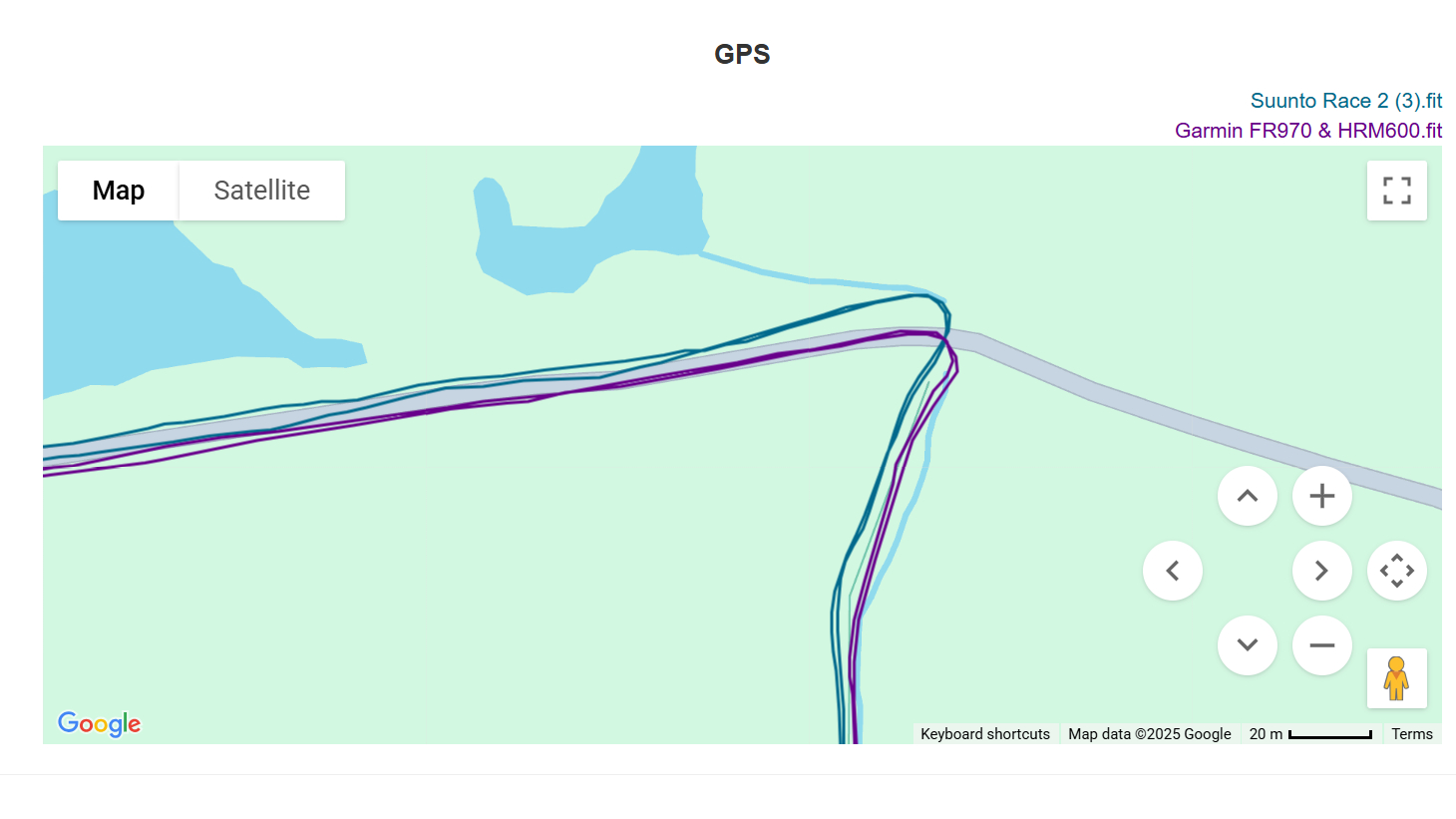
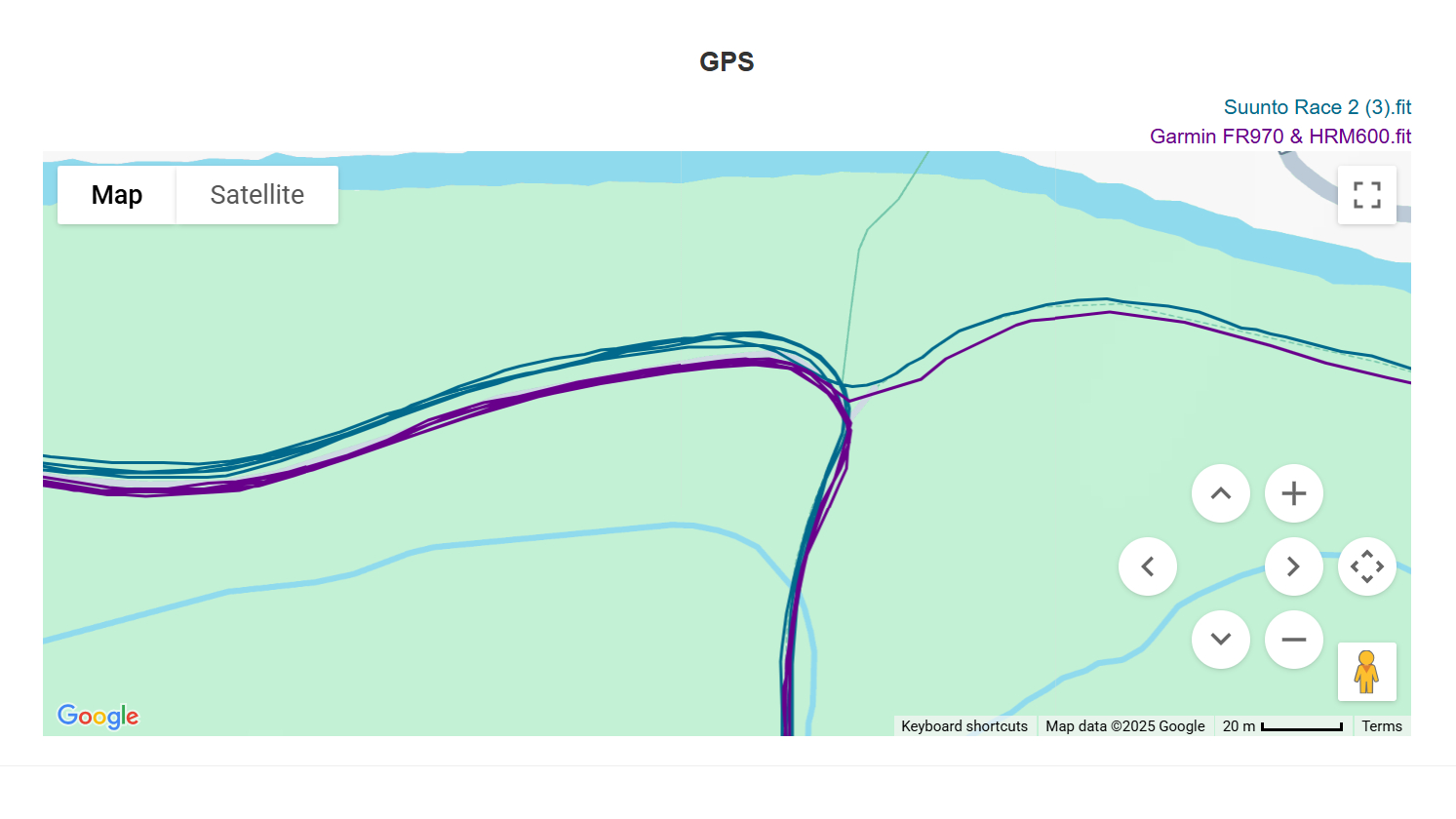
These haven’t been disastrous errors by any means and don’t affect the overall stats on my runs a great deal, but I’ve seen the Race 2 running wide on corners at times and producing a slightly faster pace than other watches as a result.
With regards to heart rate accuracy, the Suunto Race 2 is a notable improvement on other Suuntos I’ve tested thanks to its new sensor. Throughout the vast majority of my workouts it matches a chest strap closely, and on those where I did see errors these usually only happened in the early stages of a run before the watch locked onto the correct heart rate.
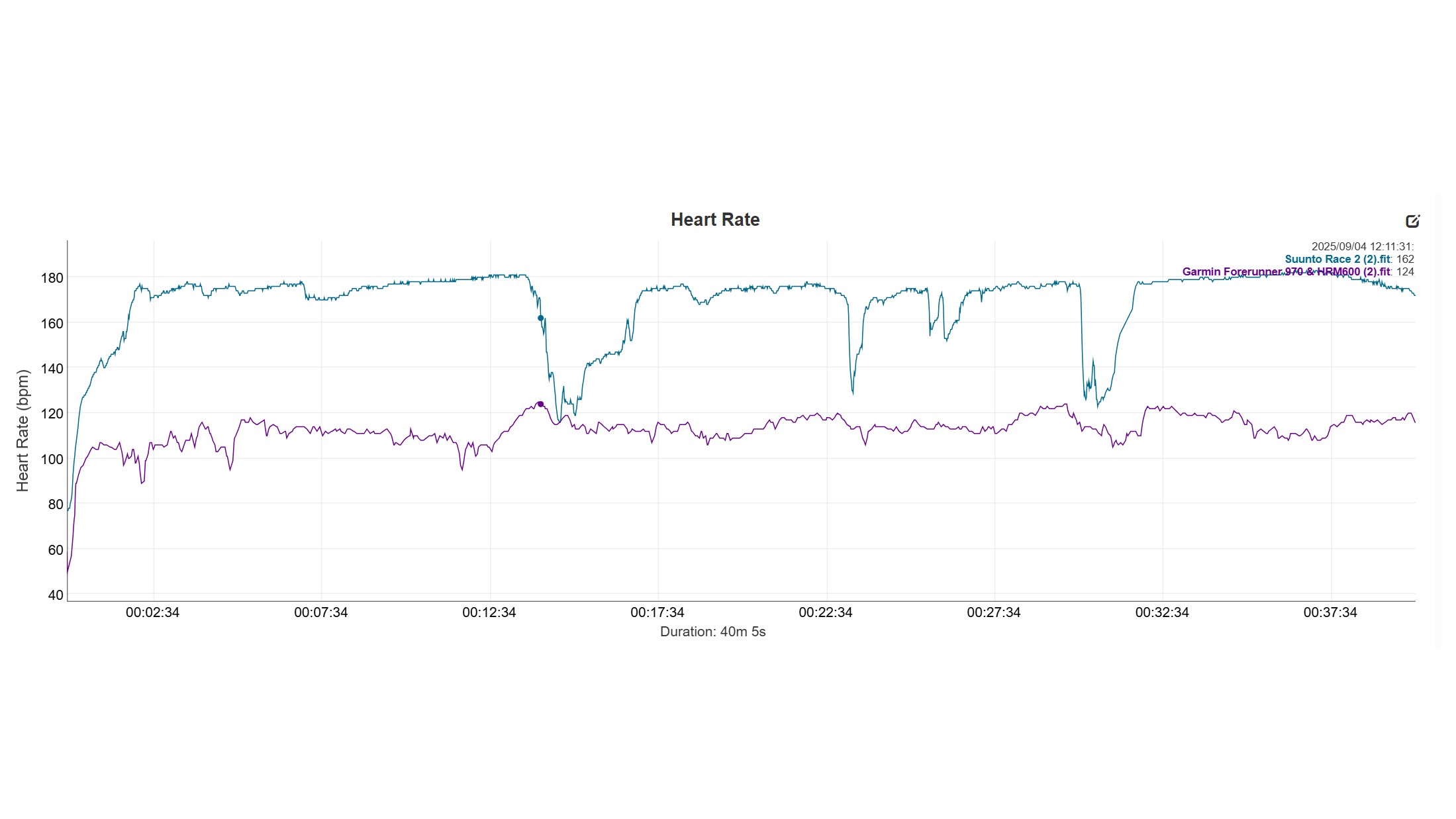
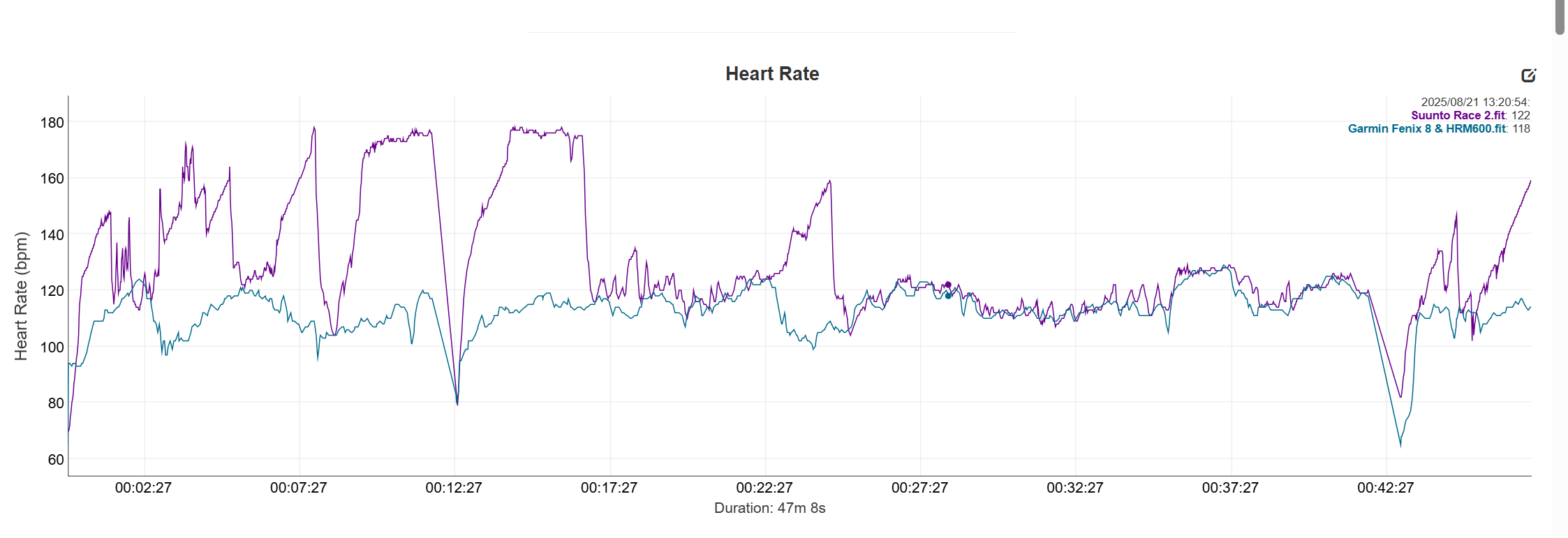

However, I have still had a couple of runs where the heart rate was wildly incorrect throughout, and I hope that updates can improve the accuracy further. The sensor is still not quite as reliable as those I’ve tested on Garmin and Coros watches lately, and I’d pair a chest strap to the Suunto Race 2 for peace of mind on this front myself.
Suunto Race 2 review: Activity and sleep tracking
The Suunto Race 2 tracks daily activity stats like steps and active calories, but while the calorie stats seem fine, the step counts are very low on the watch — a problem I’ve also noticed with other Suunto devices.
Even as someone who doesn’t focus on a daily step goal, I found this frustrating. Over the past seven days the Race 2 has my average step count as 14,049, whereas it’s 21,004 on the Garmin Forerunner 970 I’ve had on my other wrist.
The sleep tracking has been a little hit and miss for me too, sometimes missing the first half of my night’s rest and sometimes recording too long a sleep. Compared to the data from the Garmin Sleep Index armband, the Race 2 also consistently recorded much lower overnight heart rate variability readings as well.
While the Race 2 is a sports watch first and foremost, the errors in its activity and sleep tracking are worth noting, because other sports and smartwatches are stronger in both areas.
Suunto Race 2 review: smart features and navigation
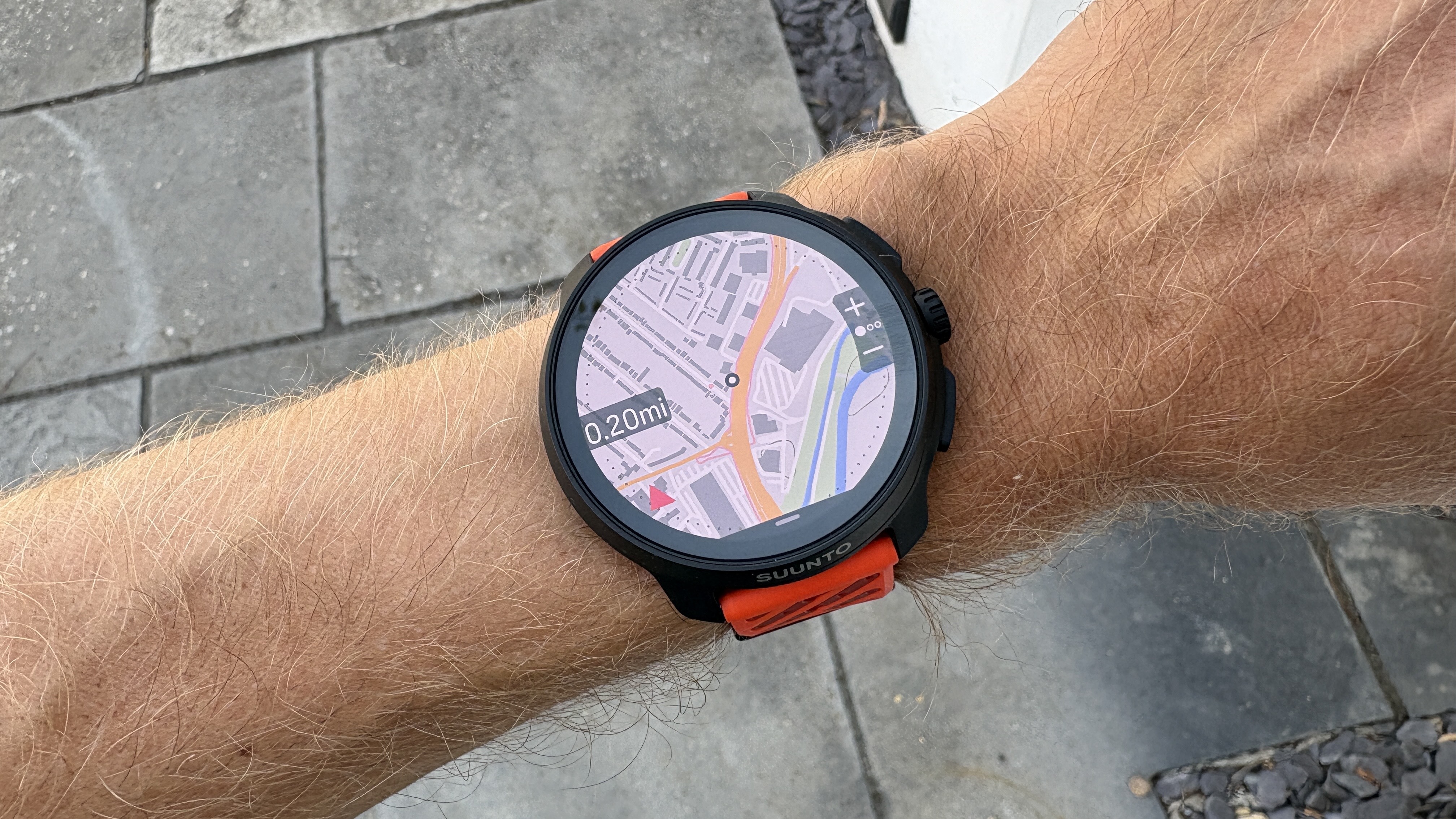
The Suunto Race 2 offers some basic smart features including mirroring your phone's notifications and controls for music playback on your phone, but doesn't have music storage, which is a strange omission given this is available on the cheaper Suunto Run.
It does have some great navigation tools though, including free offline maps you download via the partner app. You can also create routes to follow in the app and sync them to the watch, and along with turn-by-turn directions.
Suunto Race 2 review: Battery life
Given its large, bright display and thin design, the Suunto Race 2 offers excellent battery life both during and outside of your workouts. With the screen always-on, running every day using the most accurate GPS mode, I’ve found the Race 2 lasts me seven to eight days on a charge.
You can extend this battery life further by setting the screen to raise-to-wake, with Suunto listing the battery as up to 18 days in this mode, though regular training will knock a few days off that.
The 50 hours of multi-band GPS tracking you get from the watch (55 with the screen set to raise to wake) far outstrips the 21 hours you get from the Forerunner 970. This is one of the strongest features of the Race 2, and about as good as battery life gets on an AMOLED watch.
Suunto Race 2 review: verdict
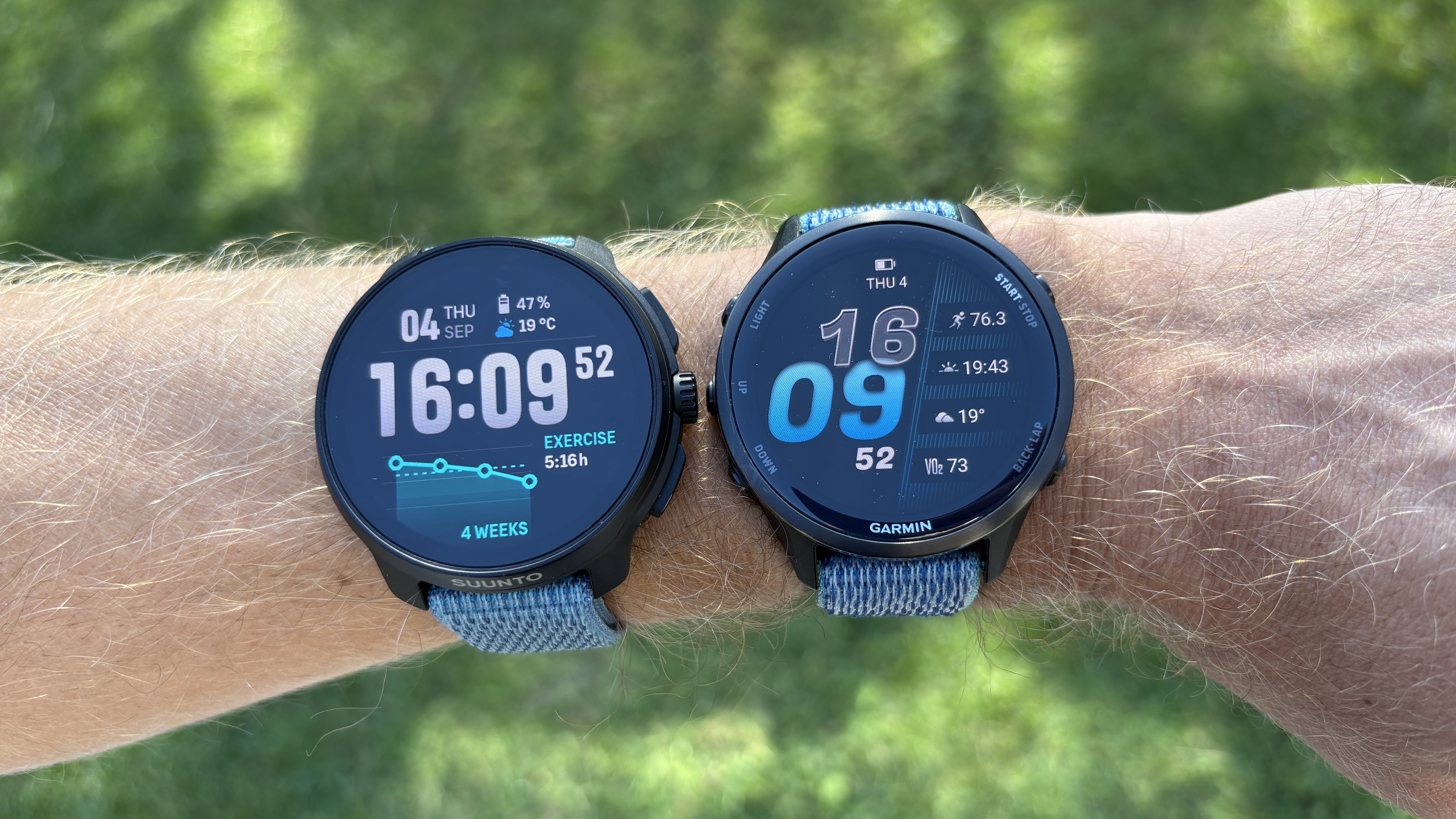
I’ve enjoyed using the Suunto Race 2 and the improved design and display are welcome upgrades on the Suunto Race. The price jump does hurt it, and even though it’s still cheaper than the Forerunner 970, the Garmin offers more sports and smart features, as well as a lighter design with a built-in flashlight.
If you are looking for value, the Suunto Race is cheaper still, and while the Race 2 is an upgrade on its predecessor in several areas, the older watch is still a great tracker if you can live without the better display and design of the Race 2.
The Garmin Forerunner 965 is another older watch that’s often in sales, and it offers more than the Suunto Race 2 in terms of smart features and has a clearer user interface, though the Race 2 has a more durable design and longer battery life.

Nick Harris-Fry is an experienced health and fitness journalist, writing professionally since 2012. He spent nine years working on the Coach magazine and website before moving to the fitness team at Tom’s Guide in 2024. Nick is a keen runner and also the founder of YouTube channel The Run Testers, which specialises in reviewing running shoes, watches, headphones and other gear.
Nick ran his first marathon in 2016 and became obsessed with the sport. He now has PBs of 2hr 25min for the marathon and 15min 30sec for 5K. Nick is also a qualified Run Leader in the UK.
Nick is an established expert in the fitness area and along with writing for many publications, including Live Science, Expert Reviews, Wareable, Coach and Get Sweat Go, he has been quoted on The Guardian and The Independent.
You must confirm your public display name before commenting
Please logout and then login again, you will then be prompted to enter your display name.
